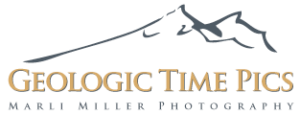Search for any geological feature below
–then click on the image to see a larger version in its correct format, a more detailed caption, and an ID number.

and please, drop me a line if you find this site useful!
*****
SOME POINTERS:
Photos typically include their locations, so you can use locations as keywords too. You get more hits with shorter words, and fewer hits as you become increasingly specific with increasing numbers of keywords. It’s best to use singular rather than plural (eg “volcano” instead of “volcanoes”).
As some words are included in others (“salt” within “basalt,” for example) you might want to be more specific to avoid getting a bunch of irrelevant photos.
Or you can just scroll down and see the most recently added photos… Enjoy!
Landslide and damaged roadway, Oregon.

Landslide and damaged roadway. Western Cascades, Oregon. (121006-5)
Download ImageEocene pillow basalt, Oregon

Eocene pillow basalt of the Siletzia Terrane, an accreted terrane of Oregon. Oregon Coast Range. (121006-12)
Download ImageLakebed deposits of glacial Lake Missoula

Lakebed deposits from Pleistocene Glacial Lake Missoula, western Montana. (120715-7)
Download ImageLahar deposit, western Cascades, Oregon

Eocene age lahar (volcanic mudflow) in the western Cascades of Oregon.
Download ImageThrust faults and folds, Oregon

Thrust faults and folds, Oregon Coast Range. (120904-66)
Download ImageToketee Falls, a waterfall over the edge of an intracanyon basal

Toketee Falls, a waterfall over the edge of an intracanyon basalt flow, Cascade Range, Oregon.
Download ImageLake Missoula Strandlines

Shorelines from Pleistocene Glacial Lake Missoula behind University of Montana campus, Missoula, Montana. (120715-11)
Download ImageLake Missoula Strandlines

Shorelines from Pleistocene Glacial Lake Missoula, Missoula, Montana. (120715-15)
Download ImageStylolites in limestone.

Stylolites, which consist of insoluble material, can form by dissolution creep during compaction or other deformation of rock. (120714-23)
Download ImageGlacial outwash gravel, Canadian Rockies

Glacial outwash gravel deposits beneath Athabasca Glacier, Jasper National Park, Alberta, Canada. (120713-67)
Download ImageTilted sedimentary rock, Canada

Tilted sedimentary rock of the Canadian Rockies. (120713-43)
Download ImageForeset beds in glacial outwash

Foreset beds in gravel of Gilbert-type delta, at mouth of steep canyon, British Columbia. (120714-31)
Download ImageAthabasca Glacier–in retreat, Canada

Front of Athabasca Glacier, Alberta, with a monument marking the front of the glacier in 2000. Jasper National Park. (120713-65)
Download ImageDevonian “Reef Rock”, Banff National Park

“Reef Rock”, Devonian Southesk Formation, with coral and stromatoporoids. This unit is an important oil producing rock in the Canadian Rockies.
Download ImageRock Glacier and Cirque (Pan)

Rock Glacier and Cirque, Banff National Park, Alberta, Canada. (ID-120713-19pan)
Download ImageHanging Valley and Takakkaw Falls (vertical)

Takakkaw Falls pours out of a hanging valley, once occupied by a tributary glacier, that has since melted back. Yoho National Park, British Columbia, Canada (120712-4)
Download ImageGlacial Cirque, Banff NP, Canada

Glacial cirque and glacier, the bowl-shaped region at the head of a glacier, Banff National Park, Alberta. (ID: 120713-13)
Download ImageSlump Scars, Banff NP

Slump scars, from gravitational failure, on oversteepened talus cone, Bow Lake, Banff National Park, Alberta. (ID: 120710-9)
Download ImageAsymmetric anticline and syncline in limestone

Asymmetric anticline and syncline in limestone, Mt. Kidd, Alberta. These folds are fault-propagation folds, as they formed at the termination of the Lewis thrust. (120711-15)
Download ImageTilted Paleozoic limestone, Canadian Rockies

Tilted Paleozoic limestone, Canadian Rockies, Alberta. (120711-6)
Download ImageBow Lake, Banff National park

Bow Lake, the headwaters of the Bow River, Banff National Park, Alberta. (ID: 120710-88)
Download Image
You must be logged in to post a comment.